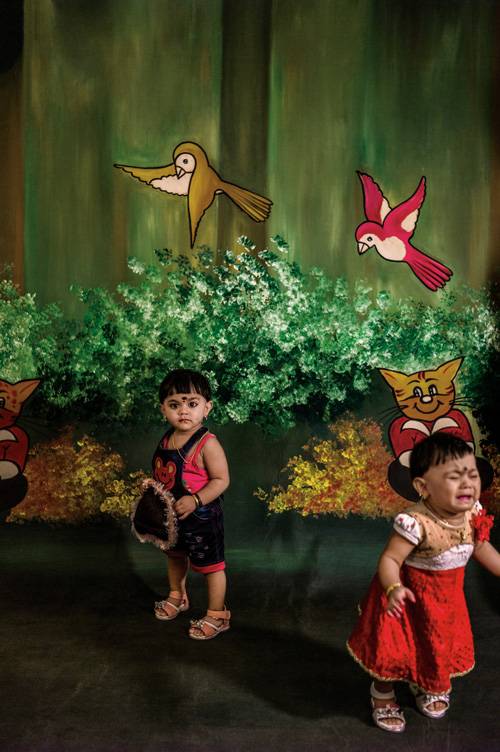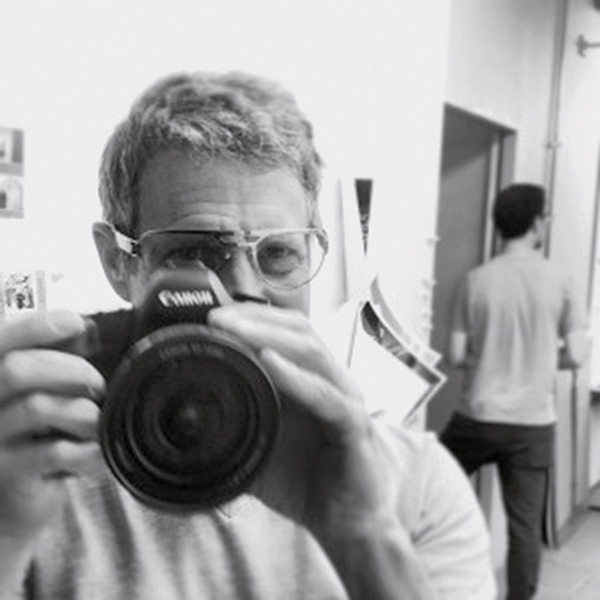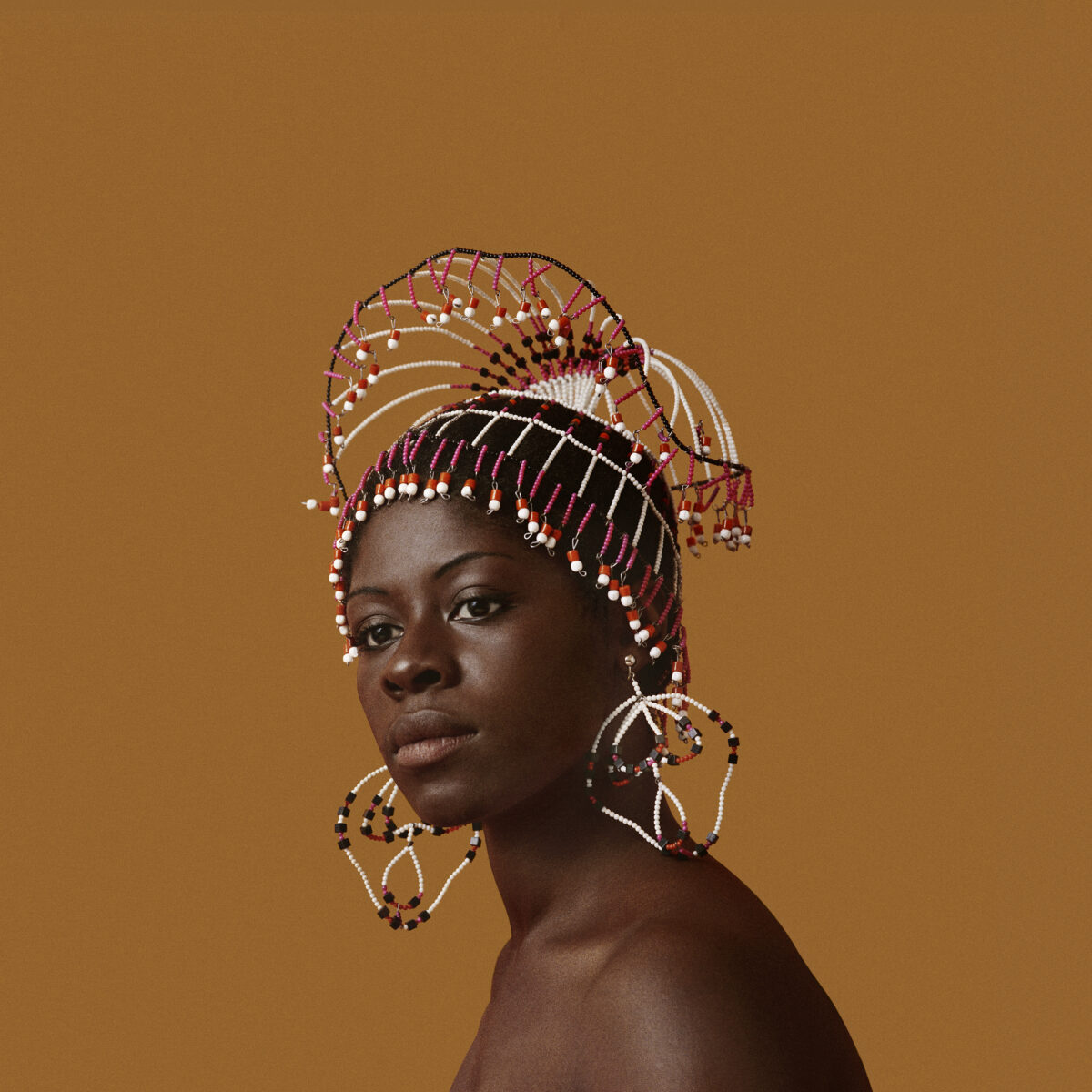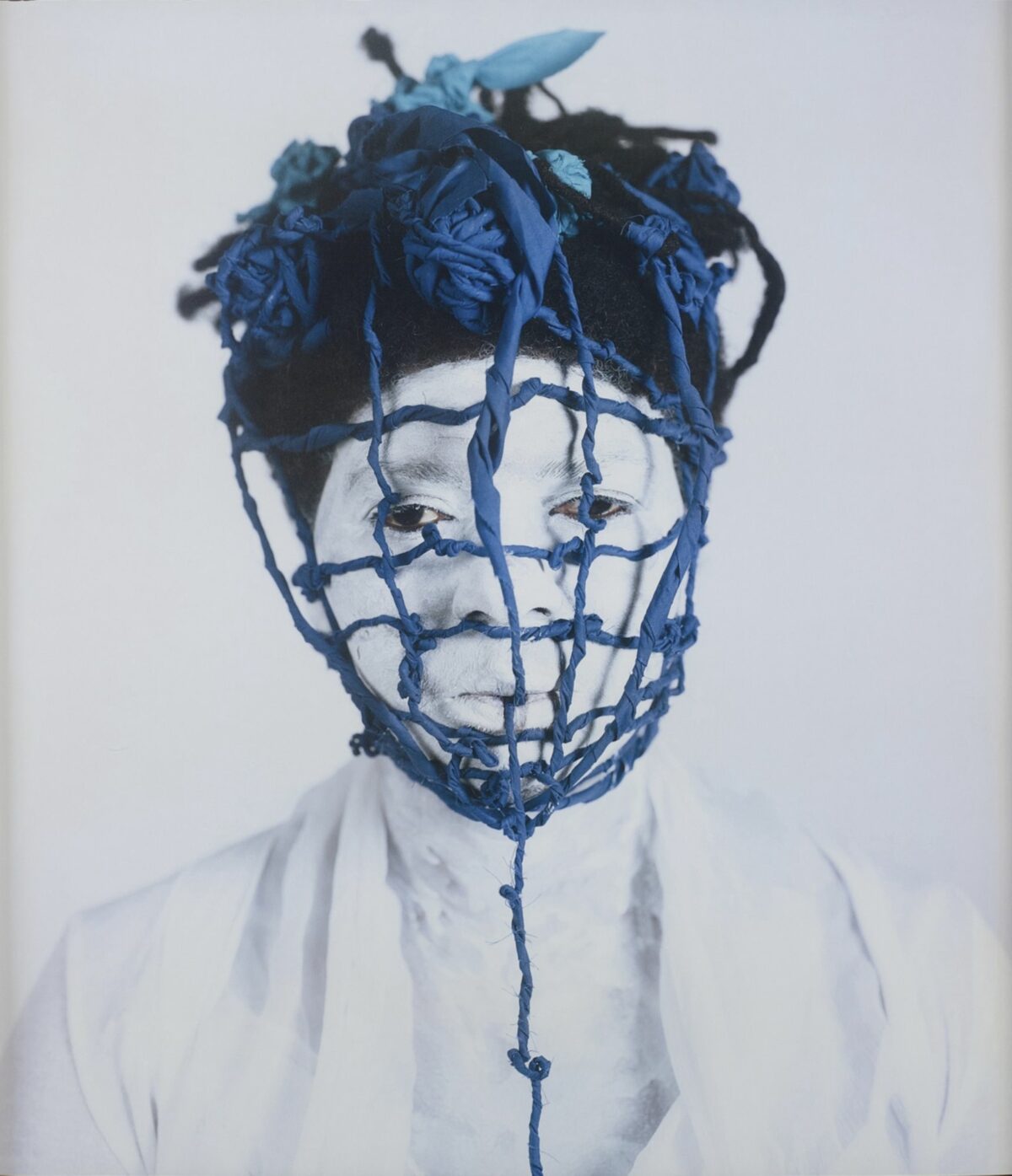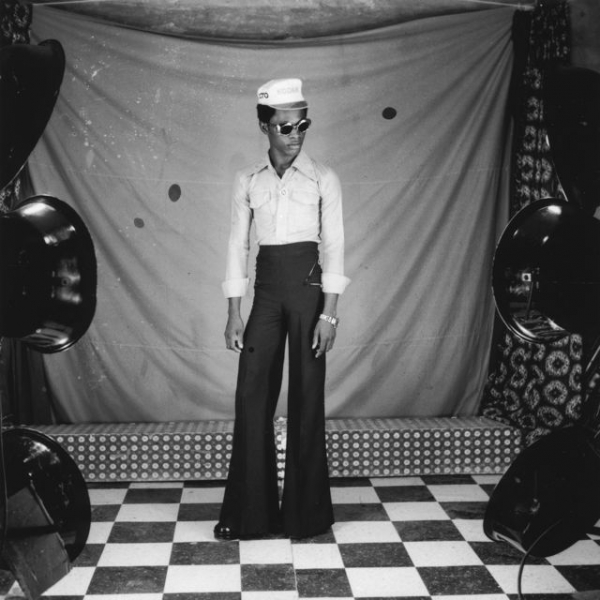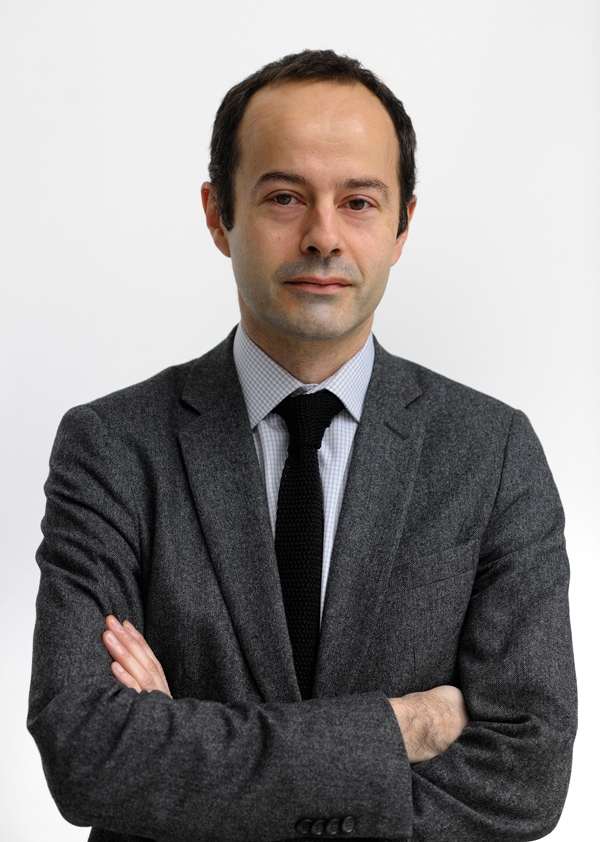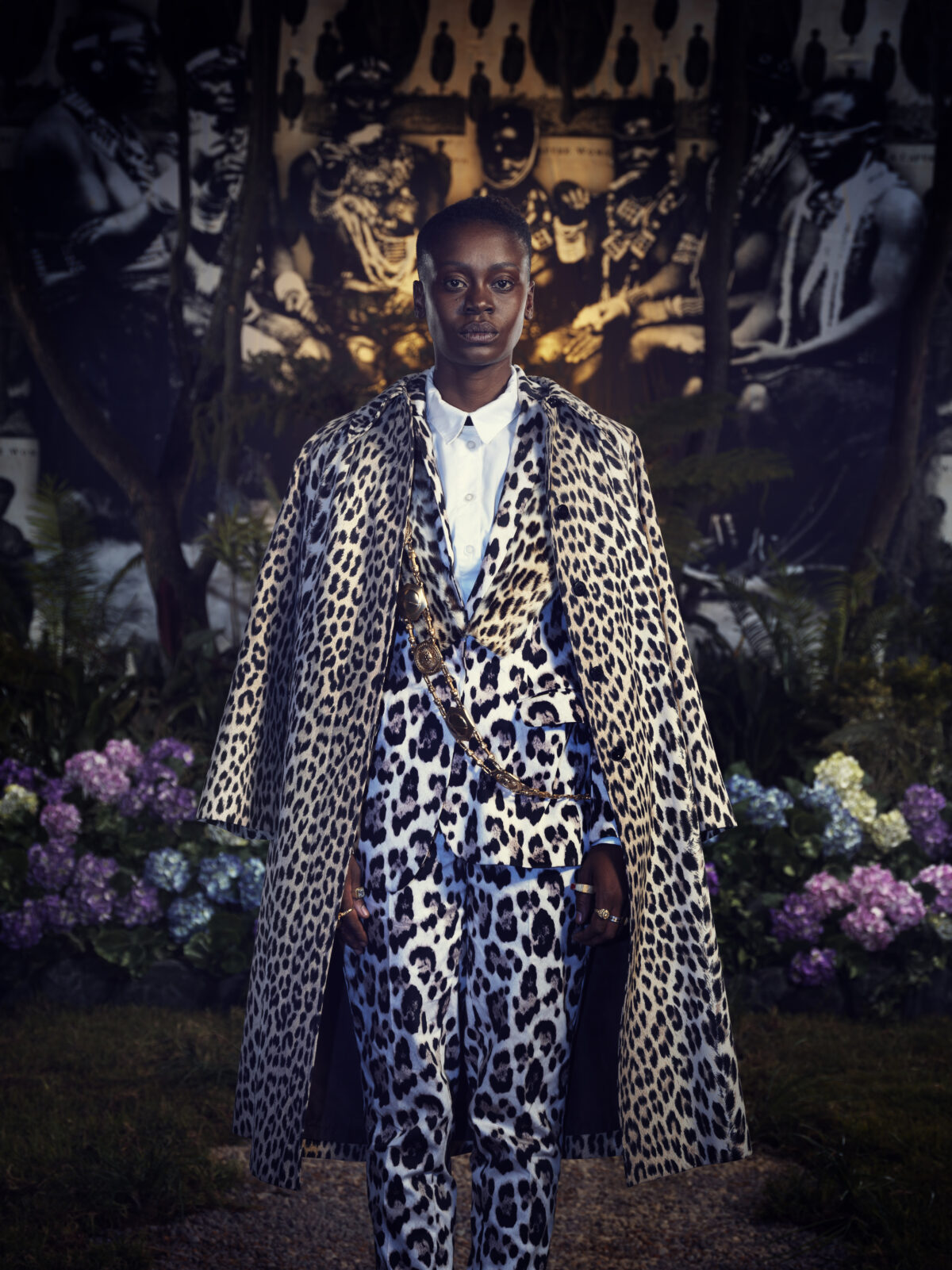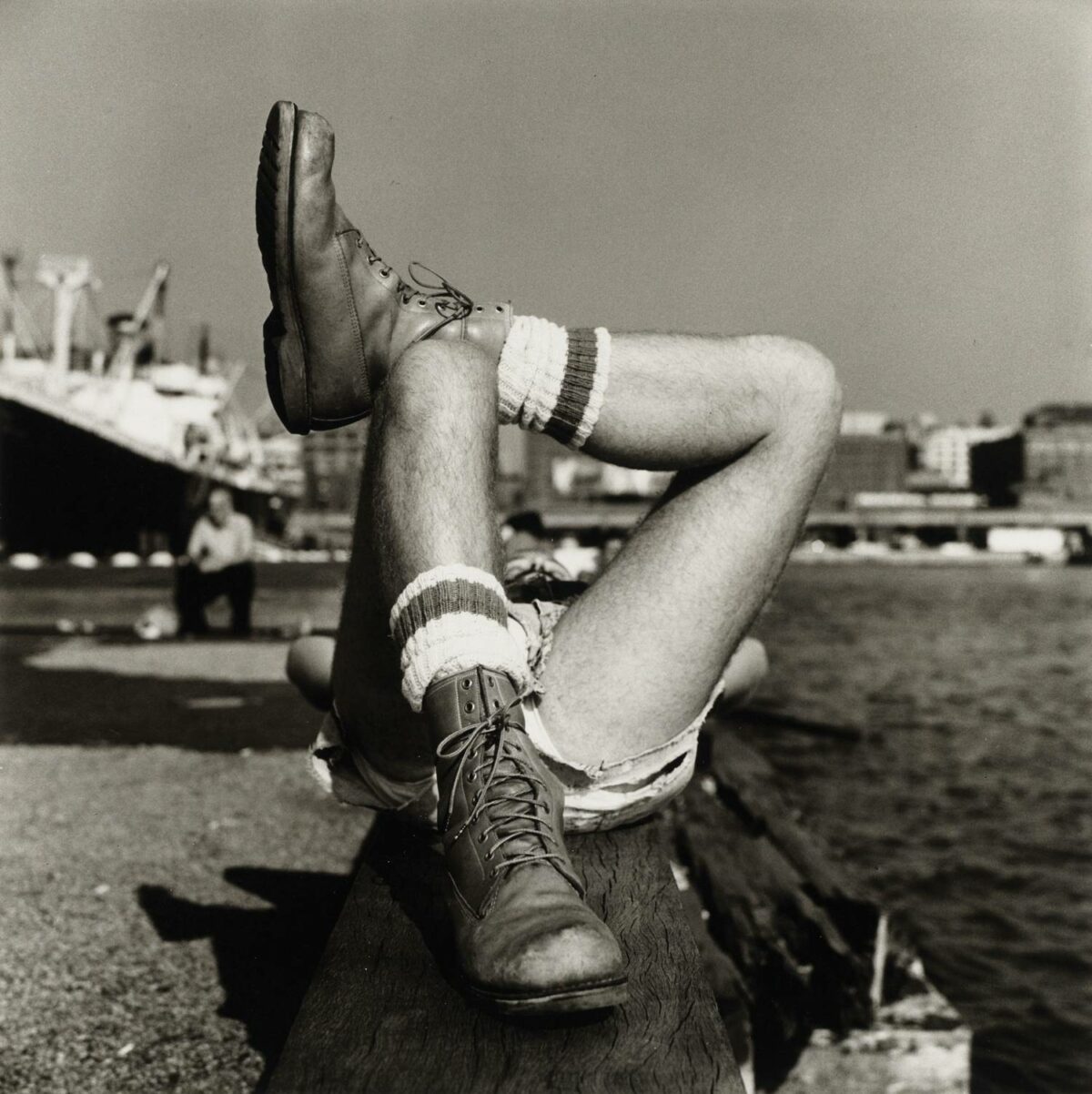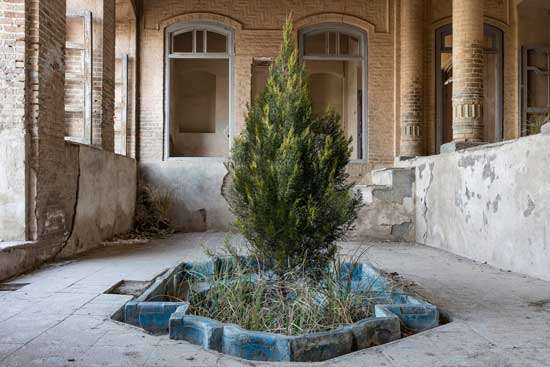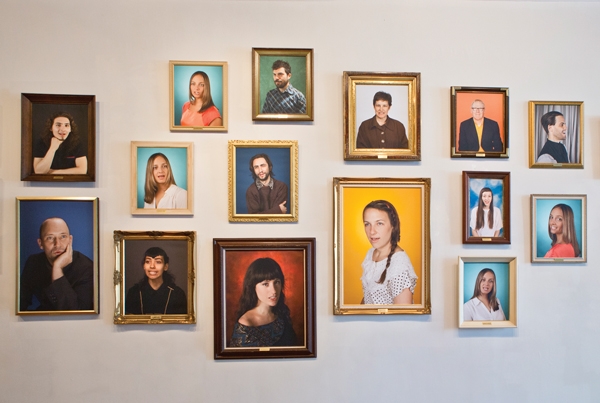

Installation shot of Thank You For Teaching Me English. Courtesy Hamiltonian Gallery
I first encountered the photographs of Naoko Wowsugi in Washington, D.C.’s Hamiltonian Gallery early this fall. (Full disclosure, we were both included in a group show, new. now.) The work, Thank You For Teaching Me English, is bright, even loud – not unlike Wowsugi herself. Born to Korean parents in Japan, Wowsugi emigrated here to study at the Kansas City Art Institute and went on to earn her MFA in photography at Virginia Commonwealth University in 2011. Wowsugi admits freely that her English is not as perfect as she might like and has tackled the process of mastering it head-on with her newest series. Thank You For Teaching Me English depicts members of the artist’s social circle who have taught her memorable words, photographed while speaking these words aloud to the camera. While this work is well conceived and executed, it is also surprisingly funny. The humor in these images stems most of all from the confluence of Wowsugi’s visual language and installational decisions played against the expressions of her sitters. Each of her subjects has been caught uttering his or her assigned word in medias res, giving them expressions of befuddlement and surprise. Wowsugi has photographed her sitters in a fashion consistent with the commercial photo studios one might find in shopping malls – lit with an inoffensive evenness against a series of variously colorful and marbled backdrops. When exhibited, these images are hung salon-style in a Rococo clump, each in a unique and ornate frame.
Wowsugi’s choice to photograph her immediate circle was born out of more than convenience or happenstance – her artistic concerns revolve around social networks and otherness. After moving stateside, Wowsugi found herself freed from some of the complications of her identity as a Korean living in contemporary Japan, and she enjoyed the ambiguity of a “pure foreignness.” The relative anonymity of the foreigner afforded her a subjective and almost anthropological eye. In her previous work Group Portrait Journey, Wowsugi uses herself as a conduit to link together seemingly unrelated social milieux. In these photographs, best seen as a collection rather than individually, she portrays members of a Muslim community center, exotic dancers, Girl Scouts, gallery workers and others with an almost German seriality. Wowsugi considers these images a survey on “the nature of belonging, social roles and boundaries” and credits August Sander’s timeless portraits, as well as the work of Thomas Struth and Tim Davis with guiding her work.
Through both of these projects, Wowsugi has sought to replace the “in-betweenness” of her cultural identity with meaningful, if brief, connections to the people she photographs. Her relationships to her subjects, both personally and on the scale of the social network, operate as an attempt to forge a new identity. These images speak to the obstacles of integration that native-born Americans may not recognize and manage to do so with a studied wit.

